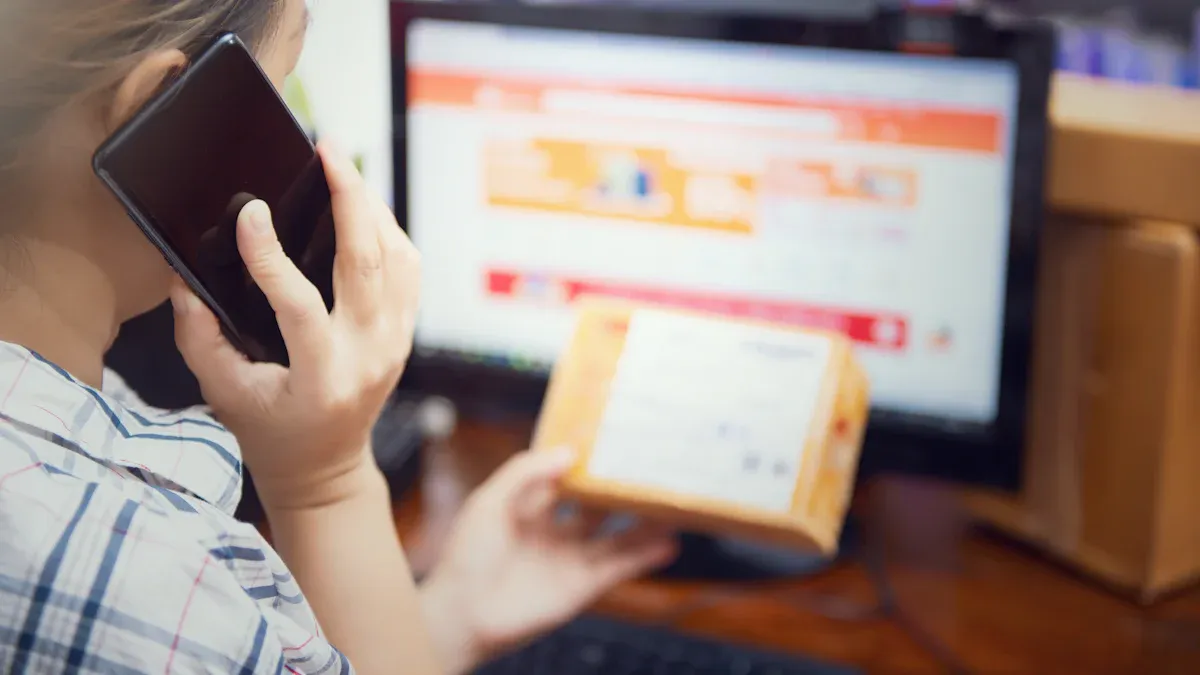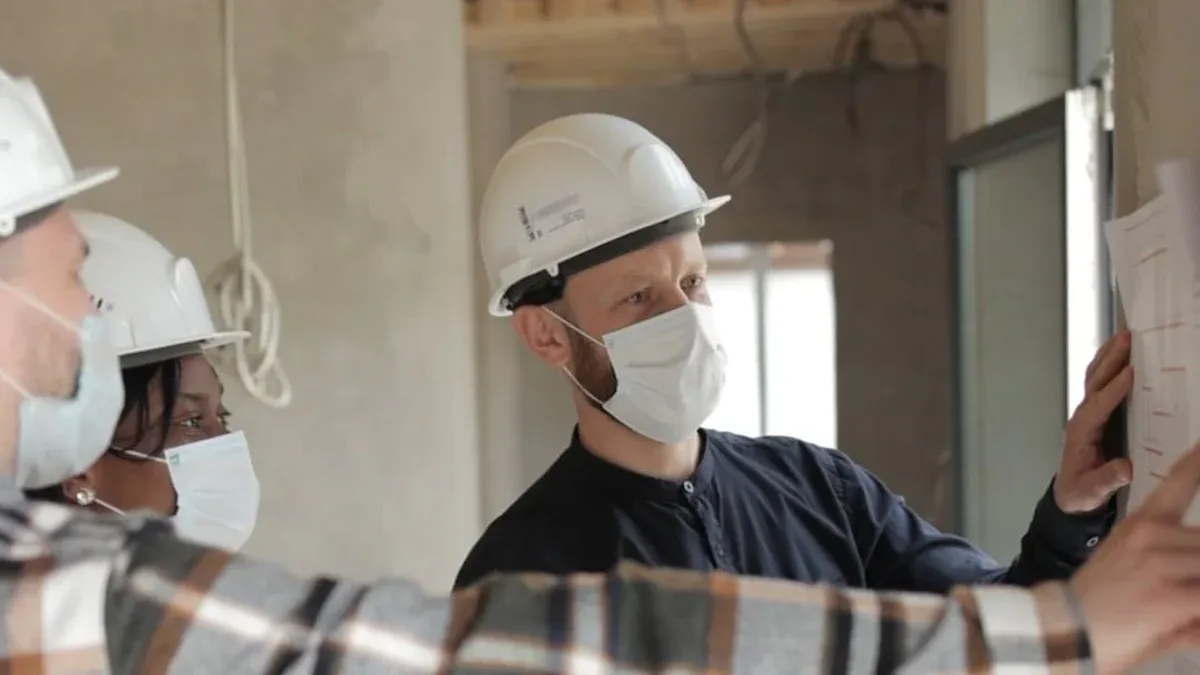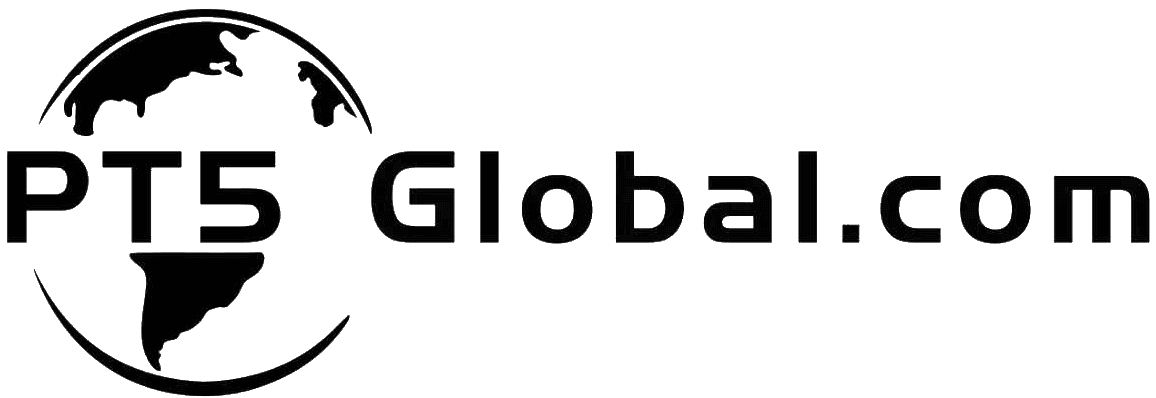
You can arrange a reliable remote inspection for your dropshipping products in China by following a few clear steps. First, choose a reputable china inspection service. Next, book the service and share detailed product information. Set your inspection requirements and confirm the schedule. Quality control protects your business from poor products and unhappy customers.
Pre-shipment inspection helps sellers ensure that their products meet quality and regulatory standards, which ultimately protects their reputation and bottom line. By addressing quality issues before products are shipped, sellers can reduce returns, increase customer satisfaction, and avoid the high costs and delays associated with post-shipment problem-solving.
Key Takeaways
- Choose a reputable inspection service to protect your dropshipping business from poor product quality.
- Set clear inspection requirements and share detailed product information to ensure thorough checks.
- Review inspection reports carefully to identify defects and make informed decisions about your products.
- Communicate effectively with suppliers to resolve issues quickly and maintain strong relationships.
- Regular inspections help build customer trust and enhance your brand’s reputation by ensuring high product quality.
Why Inspections Matter
Risks of Skipping Checks
When you skip inspections for dropshipping products, you expose your business to several risks. Poor quality can lead to unhappy customers and frequent returns. You may also face negative reviews and lose customer trust. The costs of technical support and handling complaints can quickly add up. Investing in inspections helps you avoid these problems and protects your reputation.
Many dropshipping businesses experience common quality control failures when importing products from china.
Here are some of the most frequent issues:
- Counterfeit or fake branded products can cause legal trouble and damage your brand.
- Inconsistent quality makes it hard to maintain customer satisfaction.
- Misleading promotional images often result in disappointed buyers.
If you ignore these risks, you may see increased return rates and lose loyal customers. The cost of fixing these problems often exceeds the price of a proper inspection.
Benefits of Third-Party Services
Third-party inspection services in China offer you peace of mind when importing products from china. These experts check your products for quality and compliance with international standards. You can catch defects early and avoid costly recalls. Regular inspections also help you build better relationships with suppliers.
- Third-party inspectors ensure your products meet quality and safety standards.
- They identify issues before shipping, saving you money and time.
- You gain trust from customers by delivering reliable products.
| Evidence Description | Purpose |
|---|---|
| Comprehensive inspection solutions ensure product quality and compliance with standards. | Helps avoid costly recalls and builds a solid reputation for businesses. |
| Tailored quality control inspection checklists guarantee compliance with regulations. | Protects specific standards and streamlines inspection processes. |
| Accurate and unbiased certification provided consistently. | Builds trust in the certification process for businesses relying on these inspections. |
| Customizable inspection checklists meet unique industry requirements. | Ensures precision in inspections across different niches. |
| Inspections at every stage identify and resolve defects before they escalate. | Maintains quality and safety standards throughout the production and shipping process. |
Choosing a reliable inspection service is a smart investment. You avoid the losses that come from poor product quality and keep your dropshipping business strong.
Choosing a China Inspection Service
Key Criteria
Selecting the right china inspection service can protect your dropshipping business from costly mistakes. You should look for several important factors when comparing providers.
- Service fees and commission rates matter. Lower fees help you save money on each order.
- Shipping options and speed affect your customer satisfaction. Fast delivery keeps buyers happy.
- Product quality inspection services filter out defective items. You get access to premium quality.
- Packaging, photo-taking, and repacking options improve your brand image.
- Platform usability makes your work easier. Language support and dashboard tools help you research products and track shipments.
- Customer support responsiveness shows the provider cares about your business. Quick replies mean you get help when you need it.
- Payment methods supported should be convenient and secure.
- Reputation and user feedback reveal how other sellers rate the service.
You should also check certifications and experience. Providers with industry certifications and years of experience deliver more accurate china product inspection results.
Here is a comparison of some top providers:
| Company Name | Review Scores | Response Time | On-time Delivery | Reorder Rate |
|---|---|---|---|---|
| East Shipping (Shenzhen) Co., Ltd. | 4.9 / 5.0 | ≤3h | 97.6% | 29% |
| ROY INSPECTION SERVICE LIMITED | 5.0 / 5.0 | ≤7h | 98.2% | 21% |
| Zhejiang Runyang Clothing Co. | 4.8 / 5.0 | ≤4h | 99.7% | 27% |
| Shenzhen Lianhangda Logistics | 4.9 / 5.0 | ≤5h | 93.5% | 39% |
| Shenzhen Top Way Forwarding | 4.1 / 5.0 | ≤3h | 98.4% | 32% |
| Shenzhen Fly Technology Co. | 4.5 / 5.0 | ≤20h | 99.7% | 38% |
| DPS logistic Inc | 4.4 / 5.0 | ≤2h | 97.4% | 18% |
| Shenzhen Box Supply Chain | 4.9 / 5.0 | ≤4h | 93.5% | 45% |
| China Vast Logistics Co.,Ltd | 4.2 / 5.0 | ≤2h | 100.0% | 29% |
You should ask for on-site audits. Over half of defective shipments come from unverified factories. Request statistical sampling based on ANSI/ASQ Z1.4 standards for batch inspections. Demand quarterly calibration certificates for measurement tools. Reference checks with other clients help you confirm service consistency.
Questions to Ask
When you contact a china inspection service, you need to ask the right questions.
- What is your registration number with the Chinese government?
- Can you provide a factory audit to check quality standards?
- How do you handle communication? Will you answer calls and emails quickly?
- What payment terms do you offer? Are they secure?
- Where is your physical location?
- Can you share customer references?
- Do you have a digital footprint or attend trade shows?
- Will you send product samples before mass production?
These questions help you avoid scams and find reliable suppliers. You should always verify the answers before making any payments or agreements.
Red Flags
You must watch for warning signs when choosing a china inspection service. Scams can cost you money and damage your reputation.
Here are some common red flags:
| Red Flag | Description |
|---|---|
| Surprise charges after the invoice is paid | Unexpected fees appear after you pay. |
| No documentation for shipping or customs duties | Missing paperwork for shipping. |
| Supplier insists on using their own logistics | No clear reason for using a specific shipping method. |
| Supplier asks for product files too early | Requests sensitive information before trust is built. |
| No NDAs or protection clauses in contract | No legal protection for your intellectual property. |
| Tracking number doesn’t activate | Shipment tracking does not work. |
| Supplier provides fake shipping documents | Documents for shipments are not authentic. |
| Excuses pile up with no resolution | Delays continue without clear answers. |
You should also avoid payment requests to personal or offshore accounts. Refusal to send samples before full payment is another warning sign. Large price differences compared to market rates may signal a scam.
Tip: Always check for secure payment options and request samples before placing large orders. Reliable suppliers will answer your questions and provide clear documentation.
Choosing the right china inspection service helps you avoid problems when importing products from china. You get accurate china product inspection results and build strong relationships with reliable suppliers.
Arranging Remote Inspections

Arranging a remote inspection in China involves several clear steps. You need to plan carefully and communicate well with your inspection service. This process helps you catch problems before your products leave the factory. Sourcing companies and 3PLs often help by consolidating goods and making communication easier. Here is how you can set up a reliable remote inspection for your dropshipping products.
Booking the Service
You start by contacting your chosen inspection provider. Most companies offer a full inspection service that covers every stage of the process. You need to define your inspection goals and decide what you want checked. Planning includes setting the scope, gathering documents, and scheduling the inspection date.
Tip: Sourcing companies and 3PLs can help you coordinate with suppliers and arrange the best time for inspection. They often have local staff who speak the language and understand the process.
A typical remote inspection follows these steps:
- Preparation and planning: Set your inspection objectives and gather all needed documents.
- Digital documentation review: Upload and verify records using cloud storage.
- Remote inspection execution: Inspectors use live video and sensors to check products.
- Data collection and analysis: Inspectors record findings and use digital tools to spot problems.
- Reporting and documentation: The service creates a digital report and shares it with you.
- Follow-up and corrective actions: You review any issues and track how they get fixed.
- Record keeping and compliance: The provider stores records safely and ensures you meet regulations.
Booking a full inspection service early gives you more control over the process and helps you avoid delays.
Sharing Product Details
You must give your inspection service detailed information about your products. This step ensures the full inspection service checks everything you care about. Here is what you should provide:
- Supplier contact details and the factory address if possible
- Product descriptions, including clear photos and short videos
- Packaging and packing instructions
- A list of your quality standards, including what you accept and what you reject
- Quantity breakdowns for each model, size, or color
Note: The more details you share, the easier it is for the inspection team to spot issues and follow your requirements.
Sourcing companies and 3PLs can help collect and organize this information. They often act as a bridge between you and the factory, making sure nothing gets lost in translation.
Setting Requirements
You need to set clear requirements for your full inspection service. Create an inspection checklist that covers all important points. This list should include product appearance, function, packaging, labeling, and safety standards. You can also ask for special tests or checks if your product needs them.
A good checklist helps the inspection team focus on what matters most to you. It also makes it easier to compare results across different shipments. If you use a sourcing company or 3PL, they can help you write this checklist and make sure the factory understands your needs.
Callout: Always ask your inspection provider to use statistical sampling methods, such as ANSI/ASQ Z1.4, for batch inspections. This approach gives you a reliable picture of product quality.
Confirming Schedule
After you set your requirements, confirm the inspection schedule with your provider. Most remote inspections take one to three days to complete. You usually receive the inspection report within 24 to 48 hours after the check finishes.
| Inspection Type | Turnaround Time |
|---|---|
| Remote Inspection | 1 to 3 days |
| Report Delivery | 24-48 hours after inspection |
You should double-check the timing with your supplier, sourcing company, or 3PL. This step ensures everyone is ready and avoids last-minute changes. A clear schedule helps your full inspection service run smoothly and keeps your importing products from china on track.
Pro Tip: Keep all digital records and reports in a secure cloud folder. This habit makes it easy to track compliance and solve problems if they come up later.
During the Inspection

Inspection Steps
You play an active role in the quality inspection process. When the inspection begins, the team follows a clear set of steps. Inspectors arrive at the factory or warehouse and check the product batch against your requirements. They use your checklist to examine product appearance, function, and packaging. Inspectors test samples for defects and compare them to your standards. They record results and take photos for documentation.
You should expect the inspection team to follow industry standards. They use methods like pre-production checks, during-production checks, and pre-shipment inspections. These steps help you catch problems early. Inspectors also review packaging and labeling to make sure everything matches your instructions. The team uses calibrated tools to measure product dimensions and verify safety features. You receive updates as the quality inspection progresses.
Live Updates
You benefit from live updates during the quality inspection. These updates improve transparency and help you stay informed.
- You get real-time access to inspection findings.
- You can monitor product quality as inspectors work.
- Immediate feedback lets you address issues quickly.
- You make informed decisions about accepting or rejecting products.
Live updates keep you in control. You can ask questions and request extra checks if needed. This process helps you avoid surprises and ensures your dropshipping products meet expectations.
Tip: Use live updates to communicate with the inspection team. Quick responses help resolve problems before products ship.
Inspection Report
After the quality inspection, you receive a detailed inspection report. This document summarizes all findings and helps you decide what to do next.
Here are the main details included in a typical report:
| Detail Type | Description |
|---|---|
| Quality Verification Methodology | Includes pre-production checks (PPI), during-production checks (DPI), and pre-shipment inspections (PSI). |
| Reporting Transparency | Detailed findings with photos and clear pass/fail criteria are essential. |
| Industry Standards | Adherence to quality standards like AQL levels and certifications such as ISO 9001. |
| Operational KPIs | Metrics like on-time delivery performance and average response times should be reviewed. |
You should review the inspection report carefully. Check for industry certifications and ask for client references. Make sure the report uses clear templates and includes all required details. This step helps you confirm that the quality inspection meets your standards.
After the Inspection
Reading the Report
You receive the inspection report soon after the service completes. This document gives you a clear overview of your product’s condition. You should read the report carefully and look for any notes about defects, packaging, or labeling.
- Quality control plays a key role in protecting your brand and reducing costs from returns.
- Inspection reports often cover several stages, such as Initial Factory Qualification, Pre-Production, During-Production, and Final Random Inspection. Each stage helps you confirm product quality assurance.
- If the report highlights issues, you need to consider corrective actions or request a re-inspection before shipping.
A thorough review helps you make smart decisions about accepting or rejecting shipments. You build trust with your customers by maintaining strict quality assurance.
Talking to Suppliers
You need to share inspection results with your supplier as soon as possible. Strong communication helps you solve problems and keep your supply chain running smoothly.
- Clear language and cultural understanding build trust and prevent mistakes.
- Written records and regular follow-ups help you avoid misunderstandings.
- Awareness of holidays and payment terms supports long-term partnerships.
You should keep all messages and agreements in writing. This habit protects you if disputes arise. Good supplier relationships make importing products from china easier and more reliable.
Tip: Use simple language and ask for confirmation when discussing inspection results. This approach ensures everyone understands the next steps.
Handling Issues
If you find problems in the inspection report, you must act quickly. Follow these steps to resolve issues and keep your customers happy:
- Respond to customer complaints and acknowledge their concerns.
- Collect detailed information, including photos or videos of the defect.
- Offer a fair solution, such as a refund or replacement.
- Communicate with your supplier about the recurring quality complaints.
- Follow up with the customer to confirm their satisfaction.
Quick action shows you care about quality assurance and customer service. You protect your reputation and reduce the risk of future problems.
Tips for Importing Products from China
Best Practices
You can improve your import business by following proven strategies. Always ask for pre-production samples before mass production begins. The approval of these samples, often called the ‘Golden Sample,’ sets a clear standard for quality. Factories create a few units using final production methods. You should test these samples and compare them to your expectations. Only approve mass production after you feel confident in the results. This step helps you avoid costly mistakes and ensures your products meet customer needs.
Vetting chinese suppliers is another important step. Research their reputation and request references from other import business owners. Reliable suppliers provide clear documentation and respond quickly to your questions. You should also use sourcing companies or third-party inspection services to check product quality before shipping.
Overcoming language and cultural barriers makes communication smoother. You can employ bilingual experts to help you talk with suppliers. Regular communication prevents misunderstandings. Learning basic Mandarin phrases and understanding key customs fosters goodwill. Respect personal relationships and hierarchical structures in business. Patience during negotiations often leads to better outcomes.
Tip: Keep all agreements and instructions in writing. Written records protect you if disputes arise.
Common Mistakes
Many import business owners make avoidable errors. Some skip the approval of pre-production samples, which leads to unexpected defects. Others fail to research chinese suppliers, risking scams or poor service. Ignoring cultural differences can cause confusion and slow down negotiations.
Here are mistakes you should avoid:
- Relying only on verbal agreements
- Not testing samples before production
- Overlooking supplier references
- Failing to maintain regular communication
- Disregarding cultural customs
| Mistake | Impact |
|---|---|
| Skipping sample tests | Increased defect rates |
| Poor supplier vetting | Delays and lost money |
| Weak communication | Misunderstandings |
| Ignoring culture | Damaged relationships |
You can build a successful import business by following best practices and avoiding common mistakes.
You can secure your dropshipping business by following these steps: choose a trusted inspection service, share product details, set clear requirements, and review inspection reports. Reliable inspections and strong quality control help you build trust and avoid negative reviews.
| Benefit | Description |
|---|---|
| Enhancing Product Quality | Products meet high standards, which improves customer satisfaction and your brand reputation. |
| Reducing Time-to-Market | Early detection of issues speeds up production and delivery. |
| Building Trust with Customers | Inspections show your commitment to quality and reliability. |
Partner with professional inspection services for peace of mind and long-term success.
FAQ
What is a China inspection service and why do you need it for import?
A China inspection service checks product quality before you import goods. You avoid defective items and unhappy customers. You use these services to make sure your import meets safety and quality standards. This step protects your business and helps you build trust with buyers.
How do you arrange a remote inspection for import products from China?
You contact a trusted inspection provider. You share product details and set your requirements. You confirm the schedule and wait for the inspection report. This process helps you catch problems before you import products. You save time and money by preventing issues early.
Can you use a China inspection service for every import order?
You can use a China inspection service for each import order. Regular checks help you maintain product quality. You avoid costly returns and complaints. You build a strong reputation by making sure every import meets your standards. Many dropshipping businesses choose this approach.
What should you do if the inspection finds problems with your import?
You review the inspection report. You talk to your supplier about the issues. You ask for corrections or replacements before you import the products. You keep records of all actions. Quick responses help you solve problems and protect your import business from future risks.
How do you choose the best inspection service for your import needs?
You compare providers based on experience, certifications, and customer feedback. You ask questions about their process and support. You look for clear communication and secure payment options. You select a service that matches your import requirements and helps you avoid scams.


